The predominantly Gentile church in Antioch sent the Jews Paul and Barnabas, accompanied by Barnabas’ cousin John Mark, on what would become known as Paul’s 1st Missionary Journey from c. 46-48. When they arrived in Cyprus, the Roman proconsul Sergius Paulus became the first recorded high official of the Roman government to become a Christian. (Acts 13:4-12)
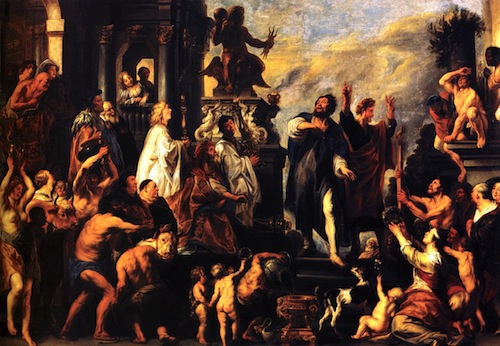
From Cyprus they sailed to Perga in Pamphylia (southern Turkey) “where John left them to return to Jerusalem.” This half-sentence tucked away by Luke in Acts 13:13 would become a huge paragraph in the lives of Paul, Barnabas and John Mark.
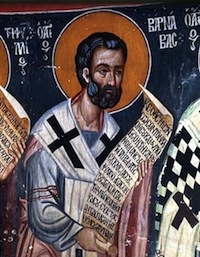
John, anglicized from the Hebrew Yohanan meaning “gift of God,” was called by his Latin name Marcus meaning “dedicated to the god Mars.” He was Barnabas’ young cousin, the son of his aunt Mary who was the head of a home church in Jerusalem. (Acts 12:12) We are not told directly, but it can be inferred that Mary had suggested Mark accompany his older cousin Barnabas and Paul on the missionary journey. Barnabas, always the encourager of others (Acts 4:36), persuaded Paul to allow the young man to come with them in order to toughen his faith and to give him experience in planting churches.
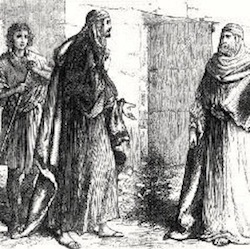
We do not know why Mark decided to go home. Perhaps he was homesick or found the rigorous ministry too taxing. We are not told. But we are told of the heated argument several years later between Paul and Barnabas precipitated by Mark’s exit at the port city of Perga, capital of Pamphylia:
“Some time later (after the Council in Jerusalem in c. 50) Paul said to Barnabas, ‘Let us go back and visit the brothers in all the towns where we preached the word of the Lord (on the 1st Missionary Journey) and see how they are doing.’ Barnabas wanted to take John, also called Mark, with them, but Paul did not think it wise to take him because he had deserted them in Pamphylia and had not continued with them in the work. They had such a sharp disagreement that they parted company. Barnabas took Mark and sailed for Cyprus, but Paul chose Silas and left, commended by the brothers to the grace of the Lord. He went (on this 2nd Missionary Journey c. 50-52)) through Syria and Cilicia, strengthening the churches.” Acts 15:36-41

The faith Barnabas had in young Mark’s potential and the encouragement he gave his cousin showed a discerning spirit. At the time of the argument Paul could never have imagined that the young “Mama’s boy” would not only write one of the four Gospels, but would end up journeying across the Mediterranean and founding the Coptic Church in Egypt—the oldest Christian body of believers in the world.
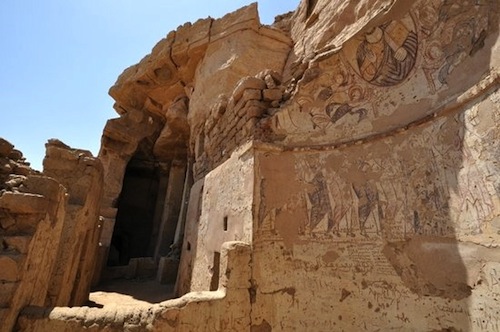
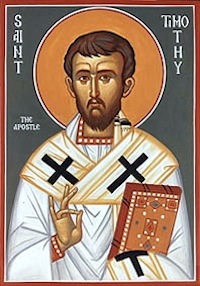
It is, however, interesting that not long after the disagreement with Barnabas when Paul and Silas came to Lystra in Turkey: “…where a disciple named Timothy lived, whose mother was a Jewess and a believer….Paul wanted to take (the young Timothy) along on the journey, so he circumcised him.” (Acts 16:1-3)
Perhaps it was through Barnabas’ devotion to Mark that Paul came to realize the importance of fostering young men in the faith and giving them the experience of spreading the Gospel? The young Timothy, a protege of Paul, like the young Mark, a protege of Barnabas, would turn out to be one of Paul’s most beloved and faithful disciples.
In c. 60 AD when Paul was in prison in Caesarea, he ended his letter to the church in Colossae near Ephesus: “My fellow prisoner Aristarchus sends you his greetings, as does Mark, the cousin of Barnabas.” (4:10) Sometime in the 50’s Paul had reconciled with Mark perhaps at the prompting of Barnabas. At the end of Paul’s life, he is in prison again in Rome, awaiting his beheading.

Over ten years after Paul and Barnabas had a fight over Mark, Paul writes to his own disciple Timothy: “Only Luke is here with me. Get Mark, and bring him with you because he is helpful to me in my ministry.” (II Timothy 4:11)
“Mark…is helpful to me in my ministry.” Hopefully, Barnabas, the “Son of Encouragement,” lived to see the abundant fruit of his labors with his young cousin Mark. Legend says Barnabas who came from Cyprus was burned to death in the hippodrome on that island. Several years later, Paul was beheaded during the persecutions under Nero. And many years after a young Mark left Paul and Barnabas in Perga, in 68 AD he was dragged to death by horses on the streets of Alexandria, Egypt because of his witness for Christ.

Barnabas’ belief in and encouragement of the unique talents of both his cousin Mark and the Apostle Paul altered in a conspicuous way the course of history. The three Christian men are a triad of redemption, forgiveness and encouragement.—Sandra Sweeny Silver
